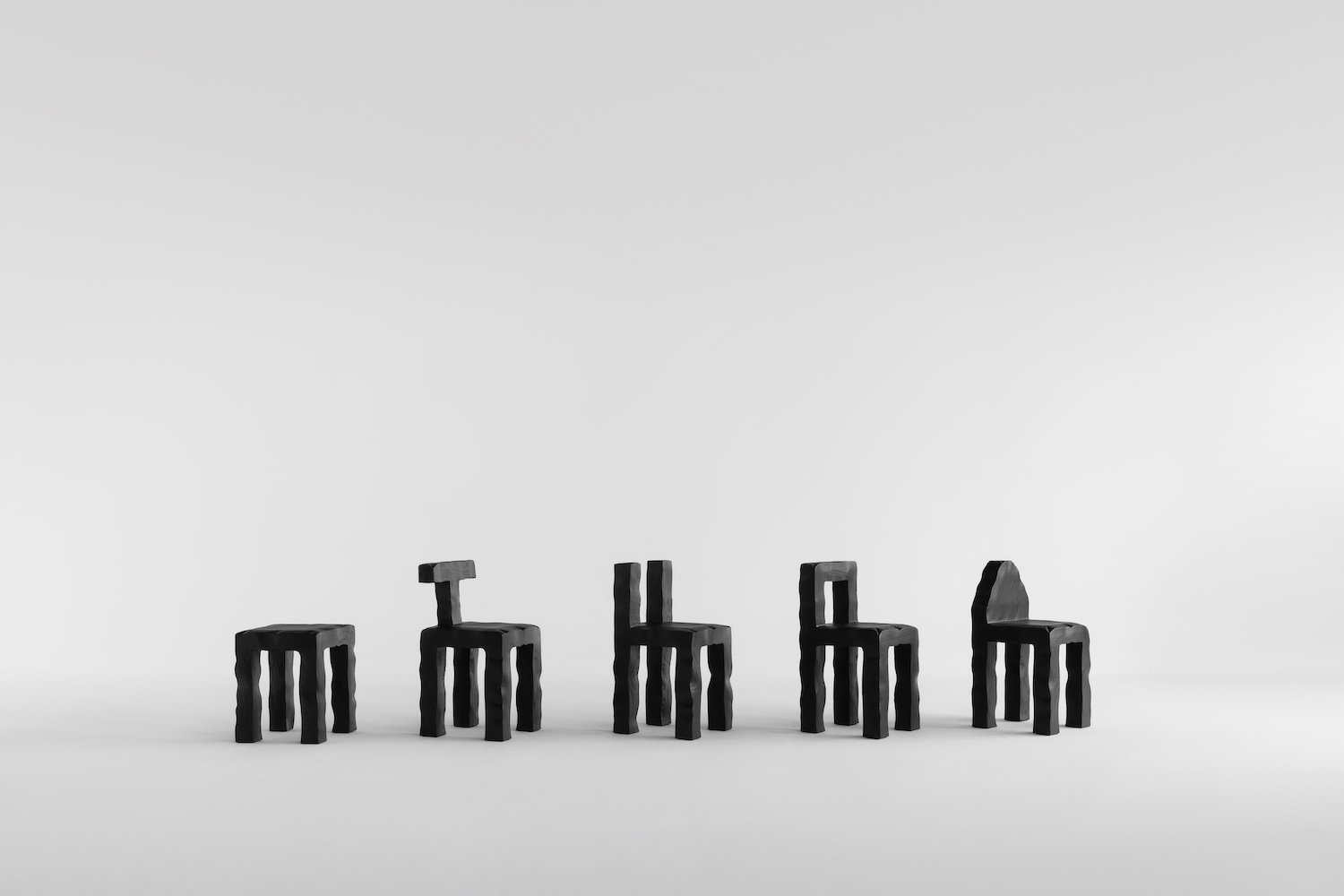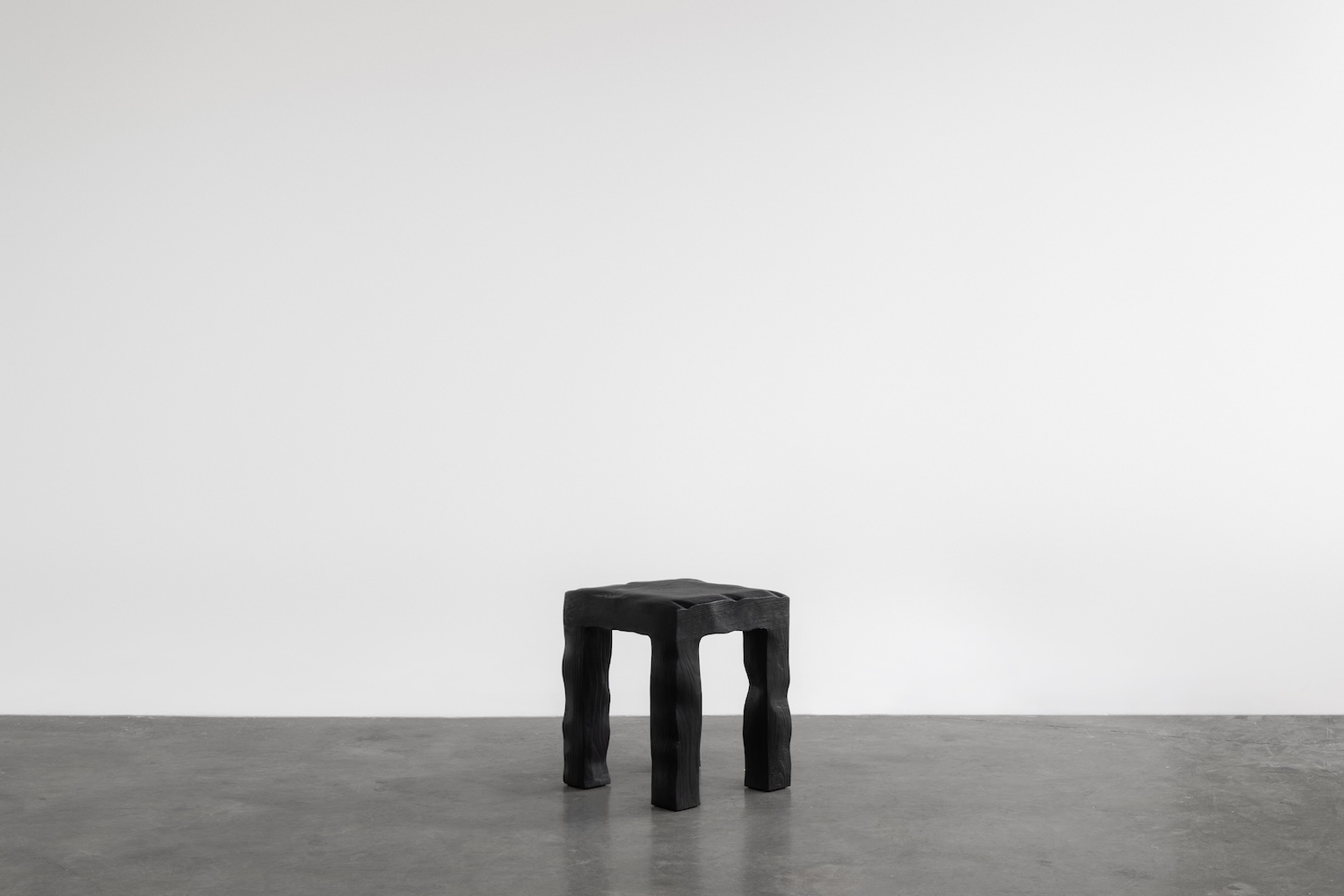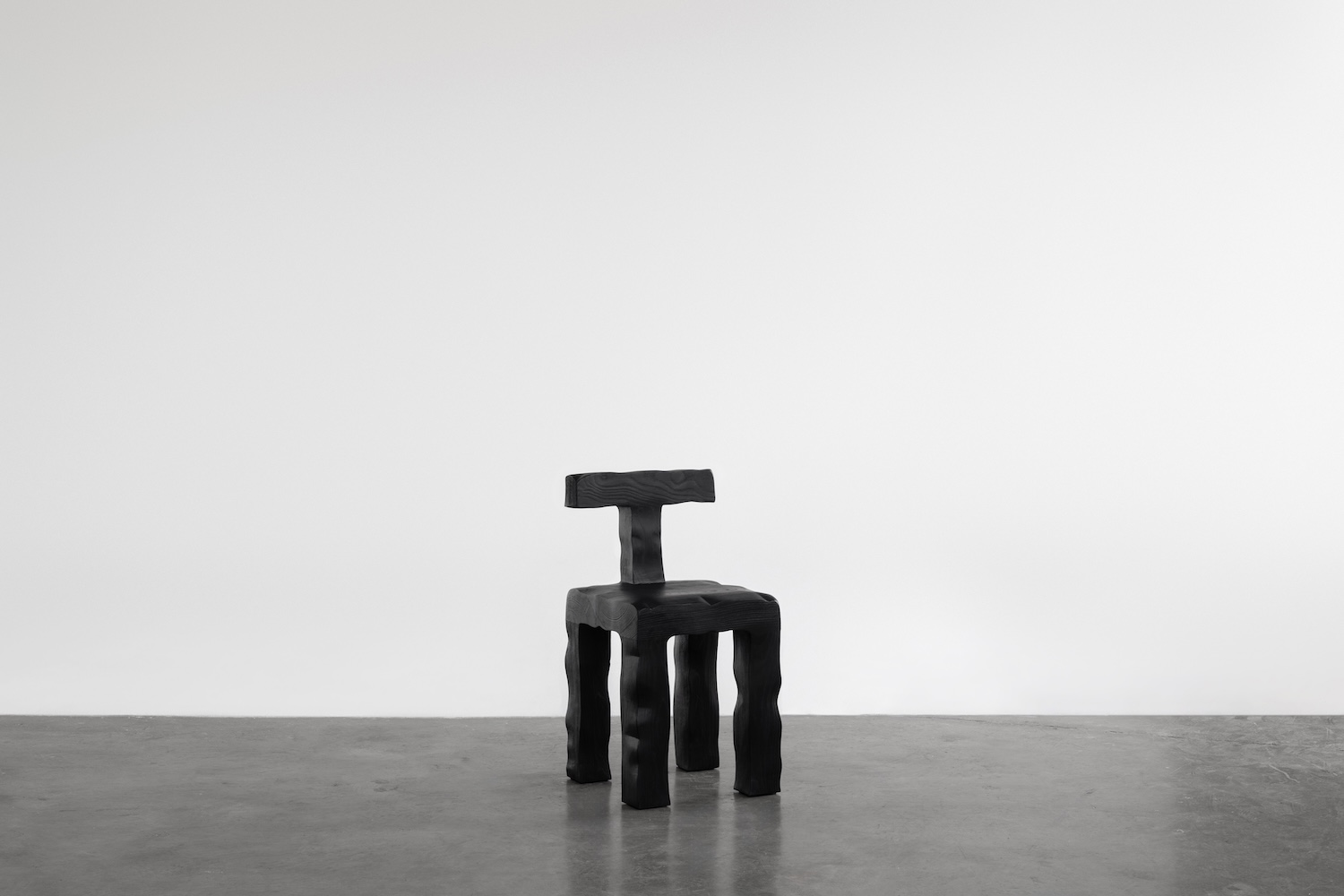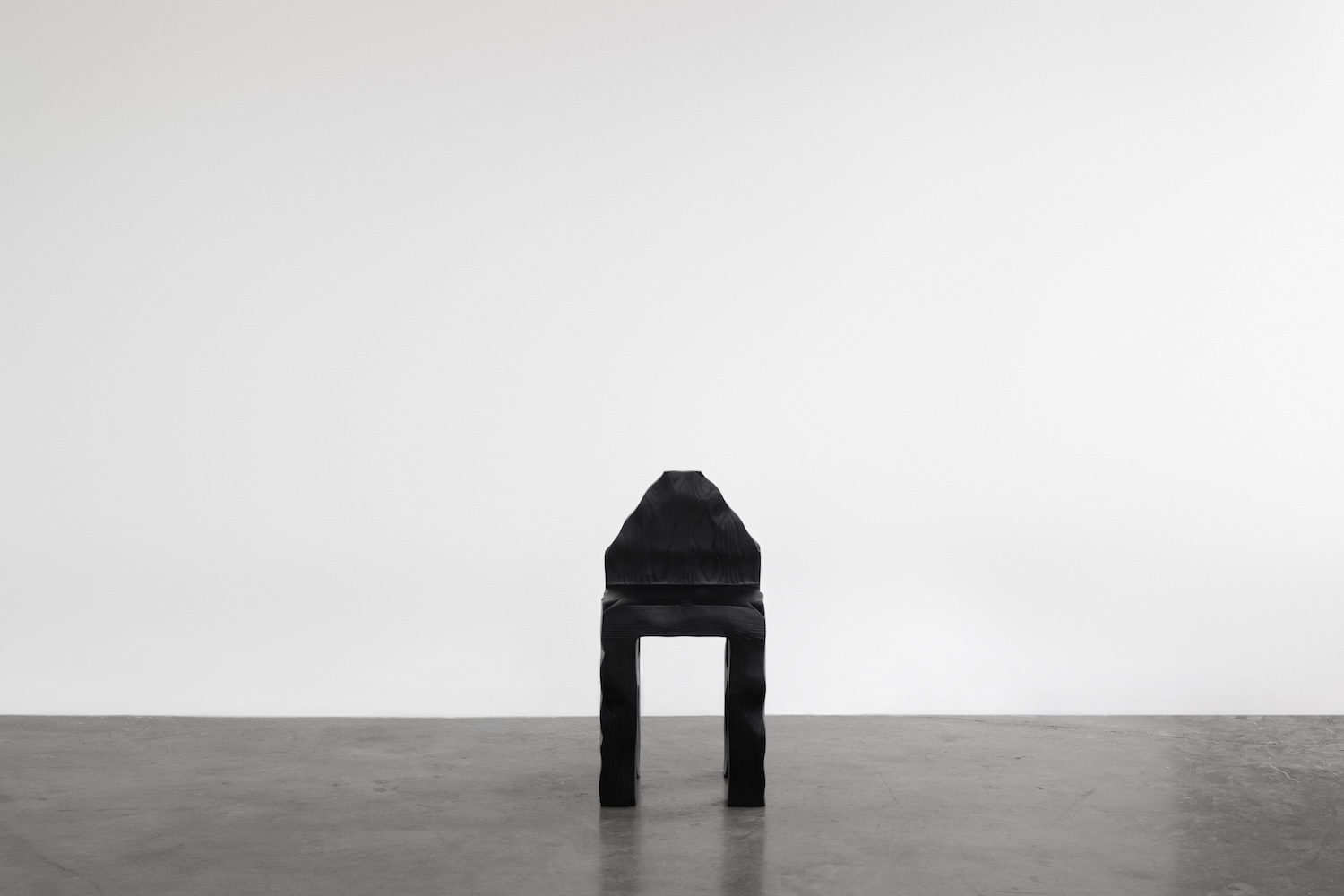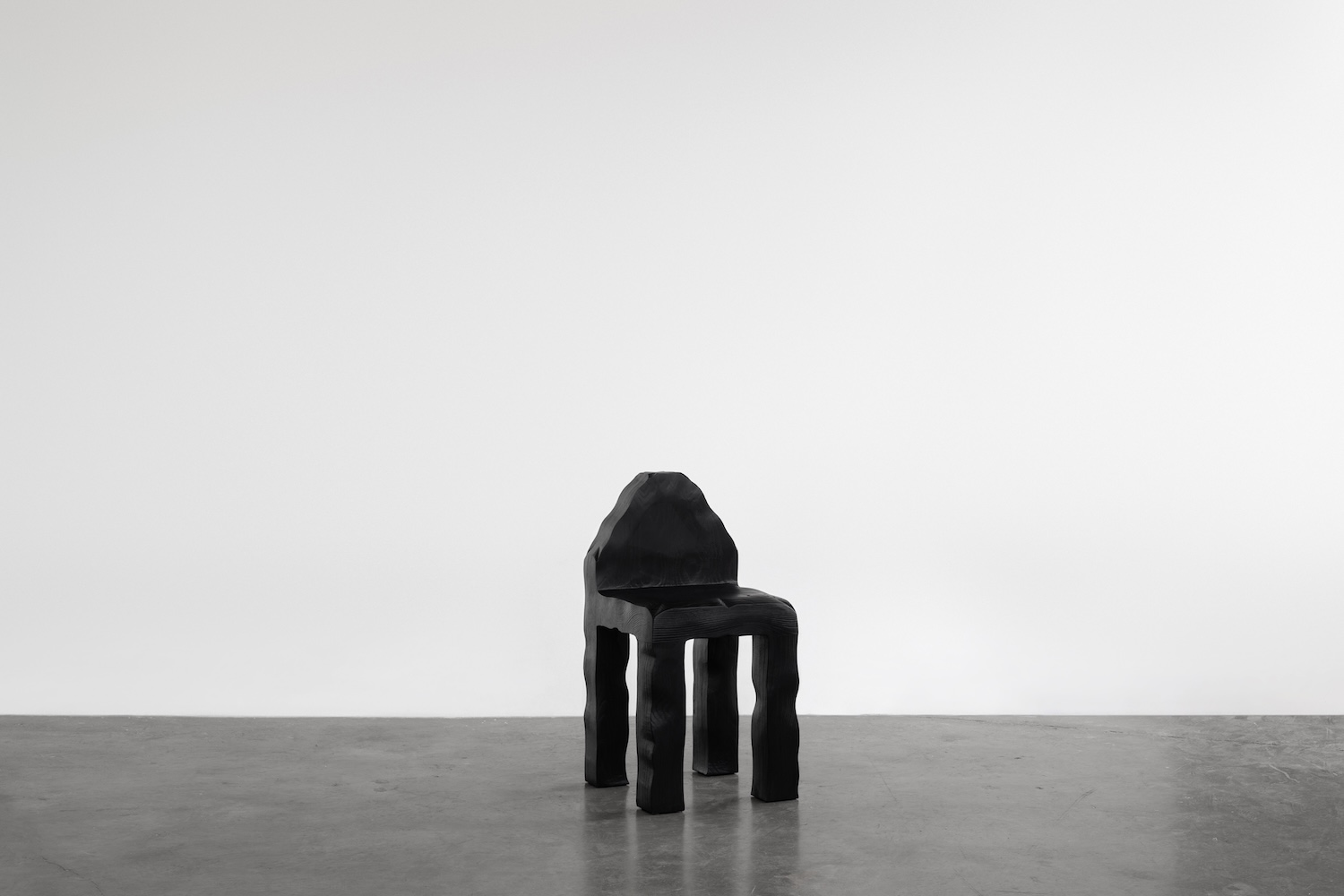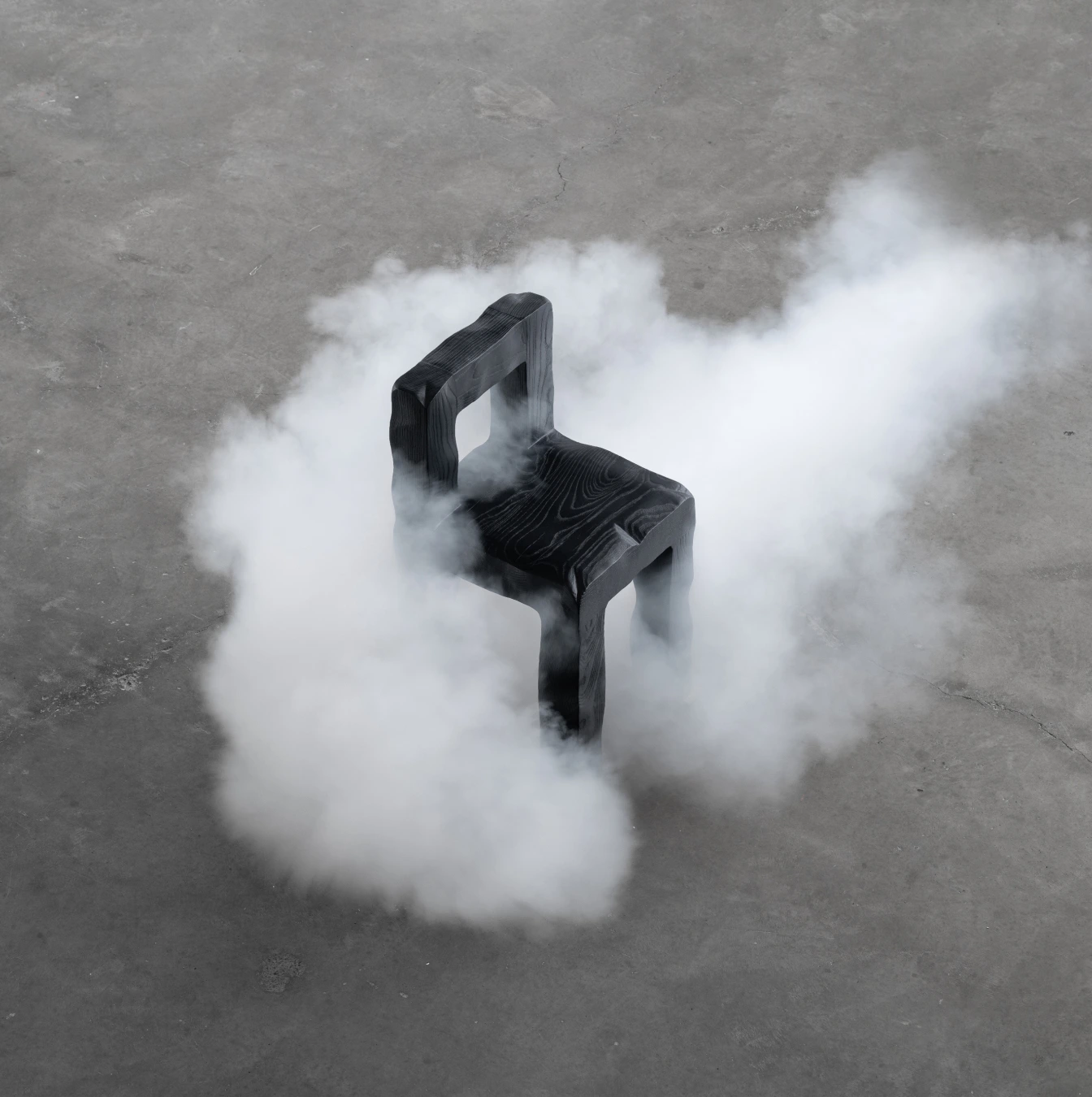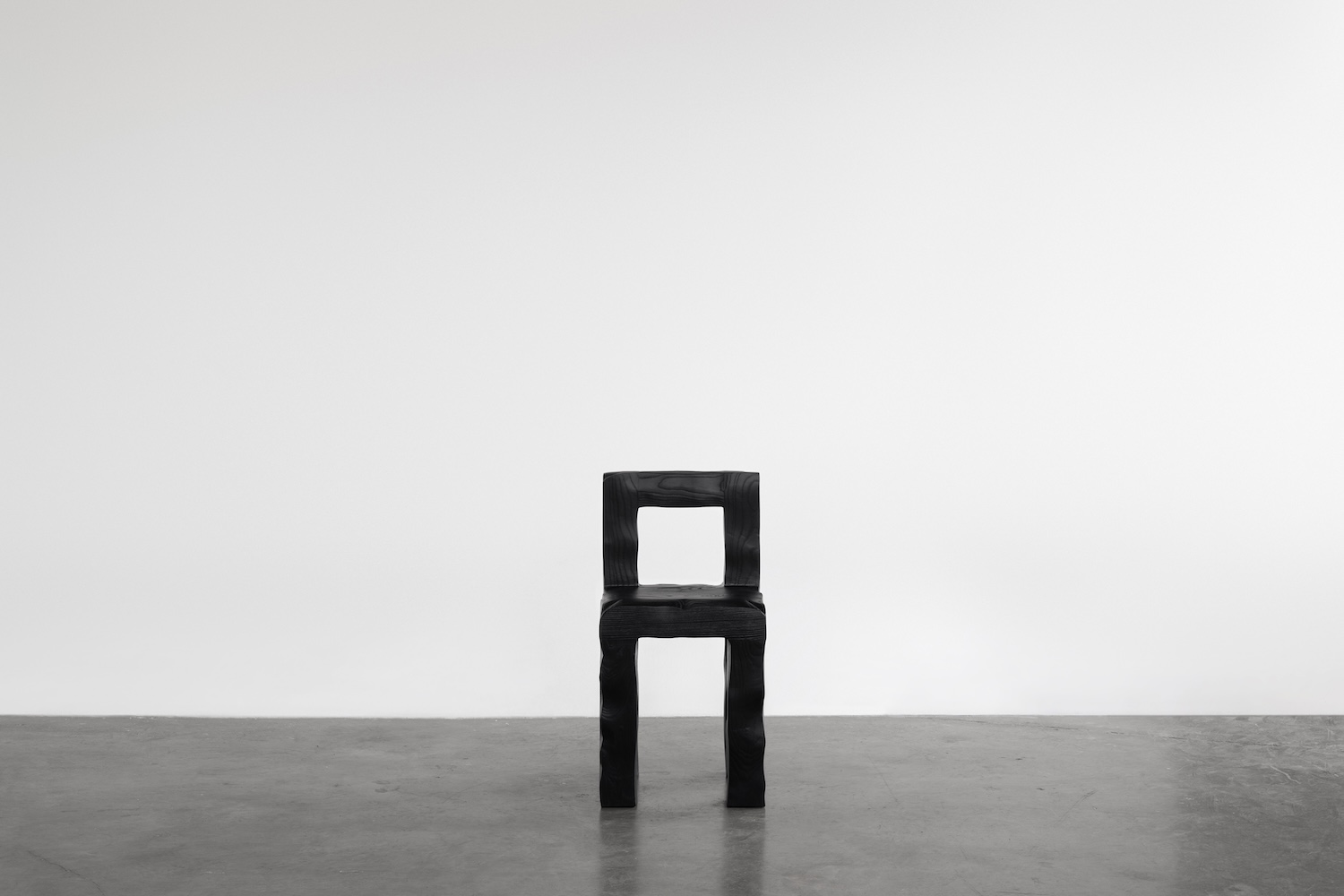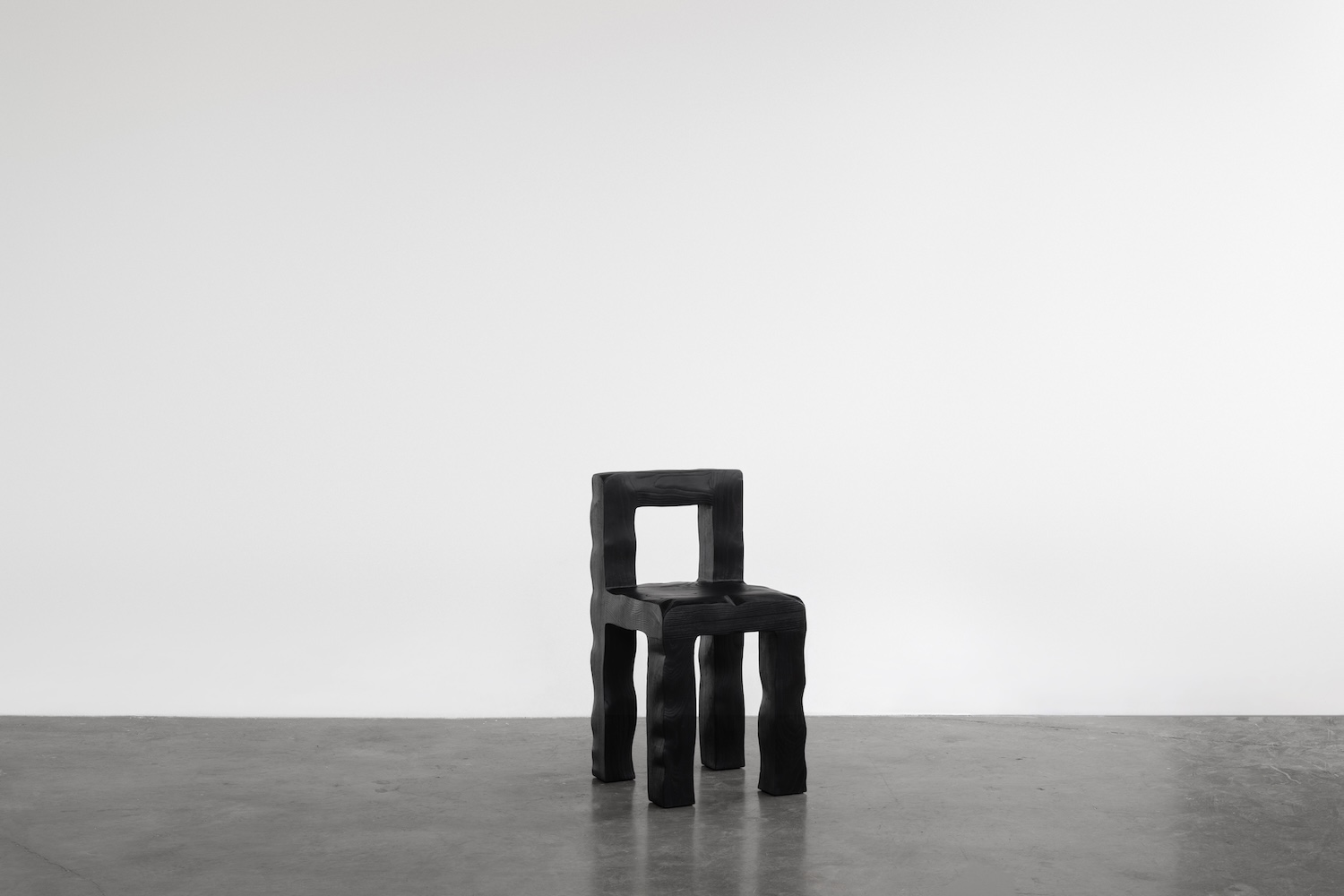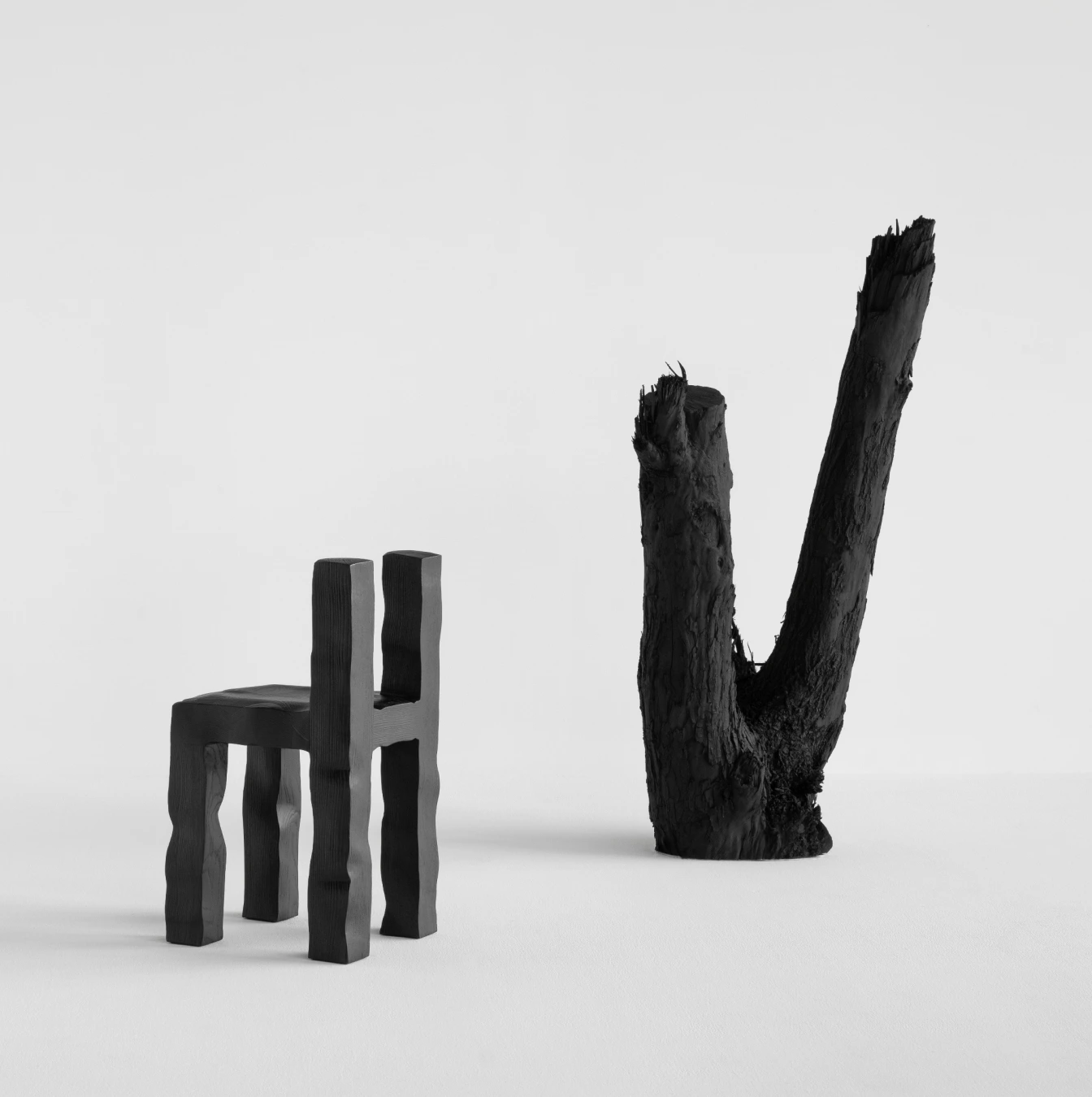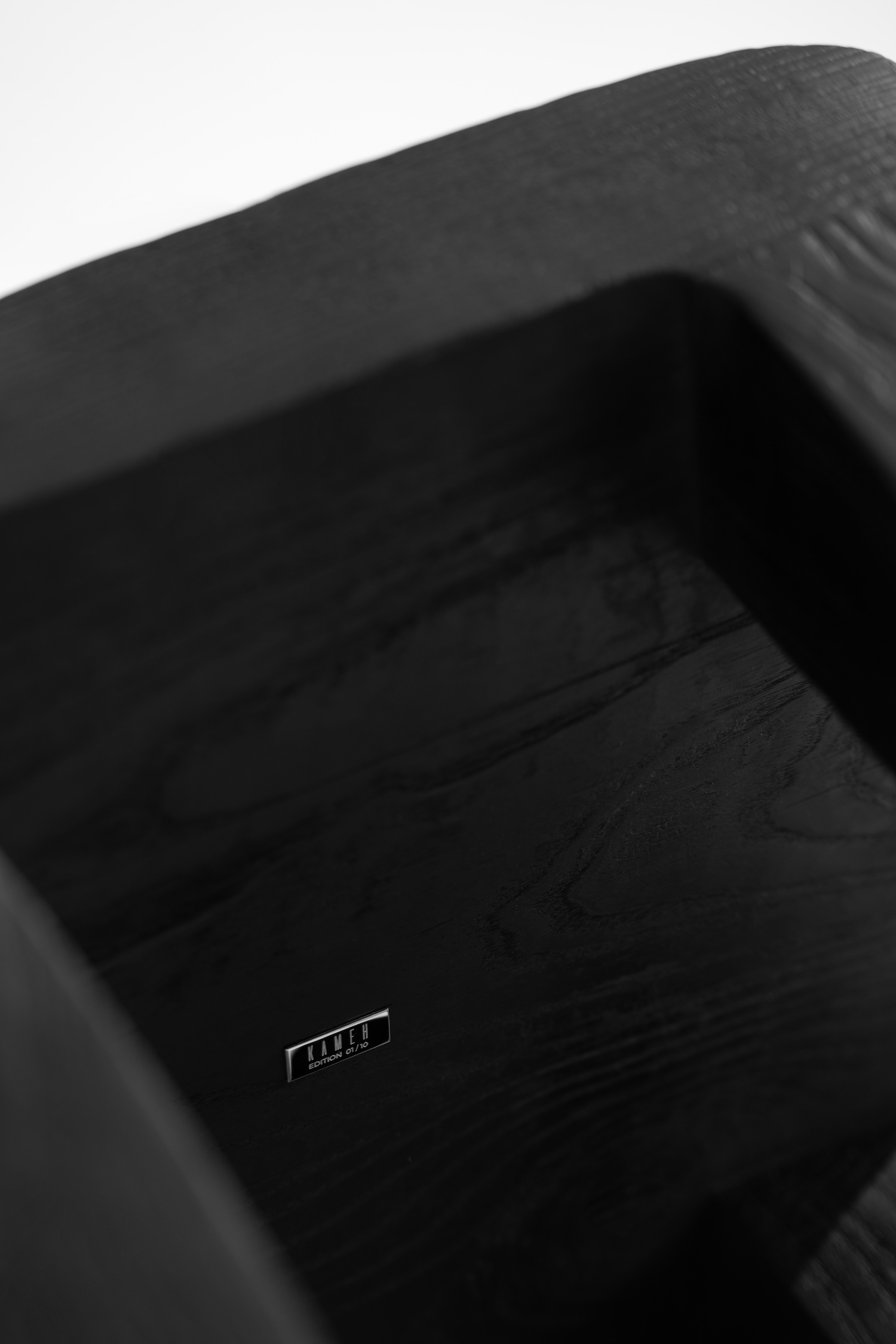KAMEH's debut at Collectible New York 2025 reimagines burnout and renewal through scorched ash wood chairs—bridging UAE minimalism and Japanese craft in a poetic study of fire and form.
KAMEH 0.5 collection significance lies less in geography than in gesture: each piece is a quiet meditation on the psychic toll of contemporary life, hand-sculpted into charred silhouettes that smolder with introspection.
Rooted in John Muir’s forest idealism, the collection engages a poetic translation of burnout into material process. The Shou Sugi Ban technique—an ancient Japanese method of wood preservation by fire—is not mere aesthetic flair. Here, it becomes metaphor: the designer’s experience of exhaustion and regeneration finds form in the blackened grain of ash wood, invoking transformation through flame. There’s a risk of literalism, to be sure. But the sincerity of the gesture, paired with the precision of craft, tempers the conceptual heat.
KAMEH’s imagined desert forest offers a speculative geography: what would trees mean in a place that knows mostly sand? This tension—between scarcity and imagination, East and West—courses through the collection’s visual language. Shou Sugi Ban, though distinctly Japanese, is here transposed onto a distinctly non-Japanese context. The result is not appropriation but synthesis: a dialogue between cultural legacies that suggests new cartographies for design.
Yet this embrace of fire also brushes against environmental unease. With over 255 million hectares of forest lost to wildfires globally, the celebration of wood-burning techniques might strike some as contradictory. Still, KAMEH navigates this ambivalence not by denying the contradiction but by framing it. The chairs are not mere objects—they are ecological propositions, advocating for slowness, preservation, and reflection in a moment of ecological urgency.
Crucially, the hand-sculpted production process gives each chair an irreproducible identity. This artisanal model stands in defiant contrast to industrial replication, aligning KAMEH with the values of the collectible design market—authenticity, tactility, and narrative provenance.

